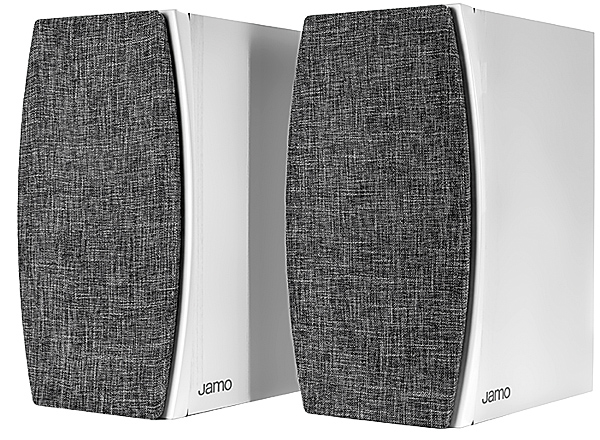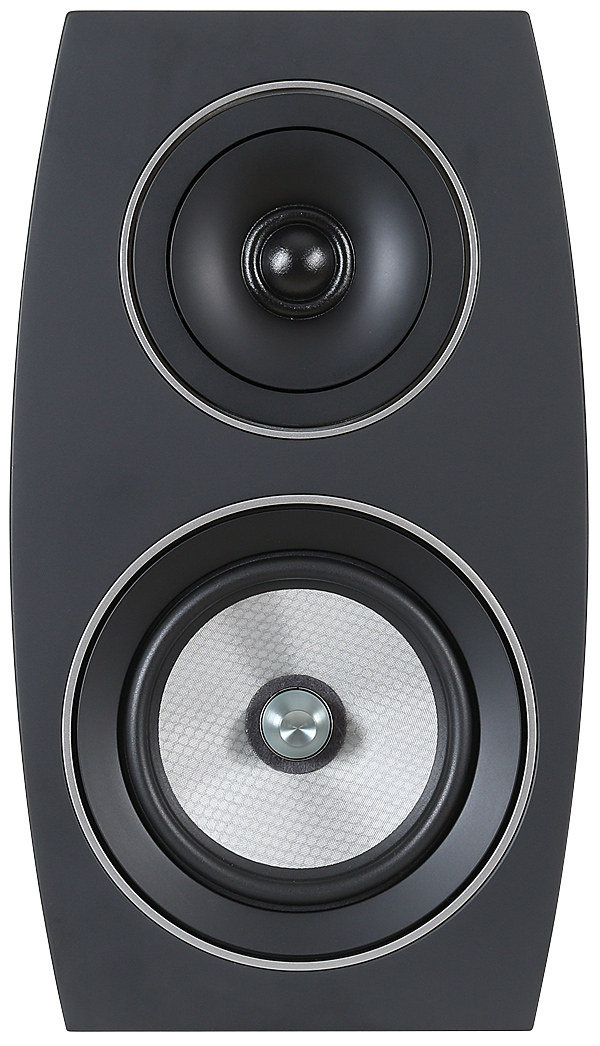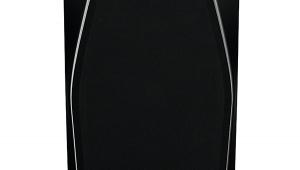Jamo Concert C 93 II Loudspeaker Page 2
![]() Perfect Highs
Perfect Highs
The manual for the C 9 II series gives little away about the suggested positioning of the speakers relative to side and rear walls beyond general diagrams suggesting all the stereo speakers, from the little C 91 II to the big C 97 II, should be used at least 2m/6ft apart, and the same distance from the listener, forming an equilateral triangle.

Jamo's illustration has the speakers placed hard against the rear wall and well in from the sides, firing straight forward. Indeed, the C 93 II even has a little key-plate at the top of its rear panel, designed to hang the speaker on a single wall-screw, even if I probably wouldn't risk that with a box weighing 6.4kg. However, hard against the wall was what I tried, with the C 93 IIs on solid, heavy stands and powered with amplifiers that ranged from the little Cambridge Audio AXA35 [HFN Sep '19] through to a Naim Nait XS 3 [HFN Oct '19].
The results were mixed: even with the speakers hard against the wall there was too much bass flabbiness, this diminishing as they were pulled out to around 0.5m into the room. Meanwhile the soundstaging and imaging, notable even with them in 'firing squad' formation – testament to Jamo's efforts in optimising the dispersion characteristics – became even better when the speakers were toed in ever so slightly, this adding to the sense of depth and focus. Your mileage may of course vary, as they say, as every loudspeaker will sound different in every room, however hard the designers try to dial out such variables.
So arranged, the C 93 II speakers showed just what they could do, which was both very impressive and highly reminiscent of the admirable qualities of the company's past Concert-series models. They have gung-ho excitement when pushed hard, certainly sounding big and weighty with a bit – but not too much – boundary assistance, but at the same time they integrate the midband and treble smoothly to create a sound that's both natural and generous.

However, there's nothing overtly rounded off or stifled here – well, apart from the lack of absolute bass from these small enclosures. Instead these little Jamos sound detailed and explicit, with excellent rendition of the tonality and timbres of voices and instruments. The tweeter so nearly does its job to perfection, the speaker only sounding a bit dry and anonymous with recordings known to have superb ambience, but is undeniably 'of a piece' with the rest of the presentation.
Quality Time
With Chrissie Hynde's set of jazz standards, Valve Bone Woe [BMG 53850448; 44.1kHz/24-bit], the Jamo C 93 IIs are persuasive with the close-up recording of the voice, while tight and yet full with the accompanying Valve Bone Ensemble. What the bass lacks in ultimate extension it certainly makes up for in both speed and timing, and the sense of musicians in the room is strong when the speakers are listened to relatively close up – ie, within a few metres.
However, this feeling of 'presence' on the part of the performers becomes more diffuse as you ask the C 93 IIs to work over greater distances. These are definitely small/medium room speakers, and Jamo offers attractively-priced options for filling larger spaces, in the form of the two C 9 II floorstanding models.
Similarly, these maybe aren't the speakers to choose if you lean towards flat-out rock or huge orchestral forces, even though they will undeniably go loud, maintain good dynamics and focus the stereo image well – at least with sufficient amplification.
Pushing things hard with the inexpensive Cambridge Audio AXA35 amp, good though it is, gave an inkling of some edge-teetering going on with the Pittsburg/Honeck recording of Bruckner's 9th [Fresh! FR733; DSD128]. Indeed, it took a step up to the much more expensive Naim Nait XS 3 amplifier for the loudspeakers to get a better grip, but even here there was some sense of the music being held in check as the levels rose.
Things were much safer with the recent Channel Classics release of Schubert's Winterreise [CCS 42119; DSD128], enabling the speakers' natural fluidity and high levels of detail to come to the fore. Within its limits, this is undeniably a highly capable design, but it's vital to understand that limits there are, as is the case with any speaker of relatively modest size and price.
Hi-Fi News Verdict
The C 93 II speakers are very good, and will delight when used as they are intended to be, in medium-sized rooms on the end of a decent amplifier. Set them up well, and they will deliver focus, fine tonality and plenty of punch, only going slightly off the boil if you ask too much of them when it comes to room-filling or absolute volume levels. The aesthetics are a matter of taste, but these remain fine speakers.


























































